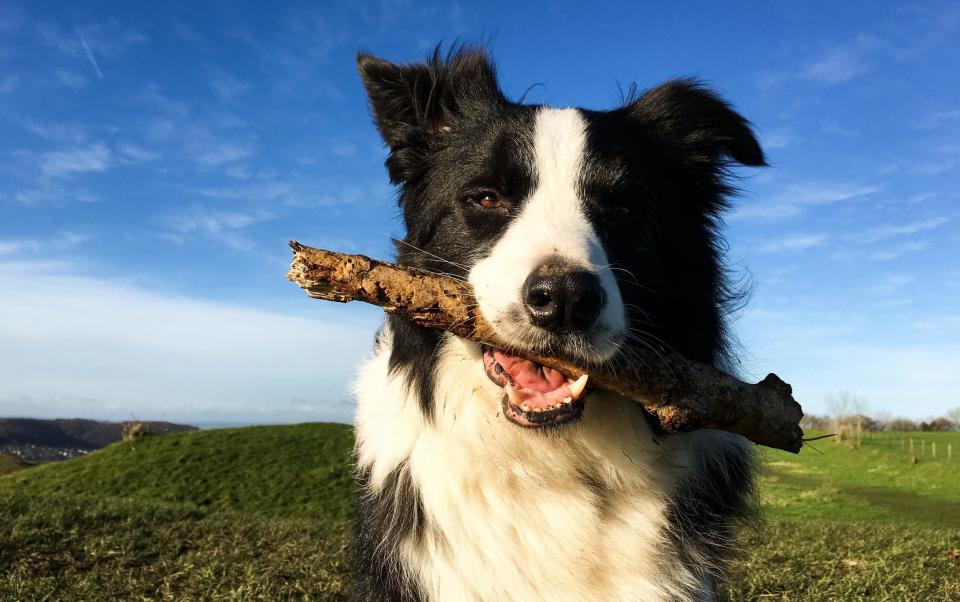Why your dog is one of these ten types

Every owner thinks their pet dog is unique but a new study has found there are only actually ten types of canine.
Millennia of breeding has created thousands of different breeds but they all fit into one of ten distinct lineages, scientists have found.
The groups are scent hound, pointer-spaniel, terrier, retriever, herder, sled dog, African and Middle Eastern, Asian spitz, Dingo and sighthound.
Analysis of DNA samples from over 200 dog breeds along with 46,000 owner surveys by researchers at the National Human Genome Research Institute in the US has identified myriad genes linked to various breed-specific behaviours.
Border collies, for example, have DNA specifically linked to their in-built ability to run and herd sheep, often requiring little to no training.
On the other hand, a Jack Russell terrier’s genetics makes it utterly useless at rounding up farm animals but viciously adept at chasing rabbits.
Scientists gathered whole-genome data from over 4,000 purebred, mixed-breed, and semi-feral dogs, as well as wild canids.
Each of the ten groups were found to closely match known types of dog with genetics underpinning the broad groups.
For example, herders, hounds and sled dogs all have their own genetic traits which make them unique when compared to terriers, dingos and spaniels.
Herders scored highest for “non-social fear”, data show, which is similar to anxiety. Terriers meanwhile got top marks for “predatory chasing”.
Scent hounds were found to score highest of all the species on “trainability” while terriers also got the highest score for “dog-directed aggression” and “owner-directed aggression”.
“The largest, most successful genetic experiment that humans have ever done is the creation of 350 dog breeds,” says senior author Elaine Ostrander, founder of the Dog Genome Project at the National Human Genome Research Institute.
“We needed dogs to herd, we needed them to guard, we needed them to help us hunt, and our survival was intimately dependent on that.”
Dr Emily Dutrow, the lead author, said identifying the genes linked to canine behaviour has historically been a difficult undertaking.
Dog groups, she said, are eclectic and made up of dogs which look very different and act in wildly varying ways.
“Pinpointing the genetics of canine behaviour can be complicated,” she said.
The team was specifically interested in sheepdogs and understanding how they are born with the natural skill and ability to herd up other animals.
“We were particularly interested in livestock-herding dogs, who display one of the most easily defined breed-typical behaviours, characterised by an instinctive herding drive coupled with unique motor patterns that move herds in complex ways,” Dr Dutrow said.
Analysis of the entire genomes of these dogs revealed 14 genes specific to sheepdogs, with eight involved in how their brains are wired up.
Axon guidance is a neurological process which dictates how a brain’s circuitry is organised and in herding dogs it was found to be enhanced.
Many of the collie-specific genes were also found to be physically close to areas which are linked to ADHD in humans as well as a “striking frequency” of genes involved in synapses in the brain responsible for passing messages.
This, the team suggests, could explain why border collies and other herders have so much energy and are also hyper–fixated by certain things, be that livestock, birds or tennis balls.
The team also found that some of the border collie herding genes were also found in wolves, indicating ancient humans likely saw wolves herding in the wild and then tried to co-opt this behaviour for their own purposes.
“After 30 years of trying to understand the genetics of why herding dogs herd, we’re finally beginning to unravel the mystery,” said Dr Ostrander.
Similarities were seen in the genetic links underpinning behaviour of dogs and also that of humans, with the scientists saying dogs and people may have similar biological pathways.
“The results of this study may point us toward how differences in the human genome can contribute to behavioural diversity among humans,” added Dr Ostrander.
“Further research can help us draw a stronger link between genes that are important for behaviour in dogs and genes that may play a role in human behavioural conditions.
“Instead of looking at a snapshot in time, our study mapped out how dog breed lineages diversified over hundreds of years and explains how the different breeds we see today are a result of human selection.”

 Yahoo Movies
Yahoo Movies 